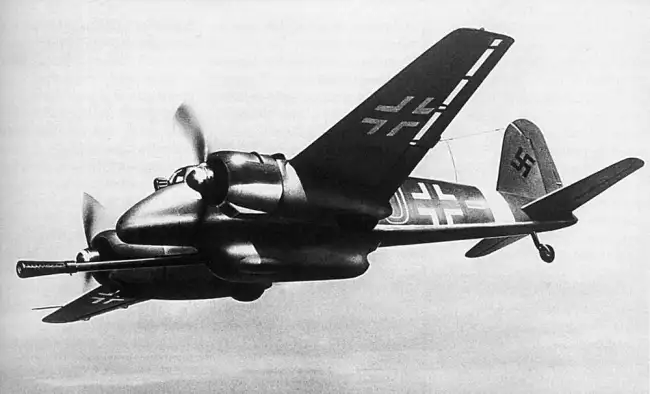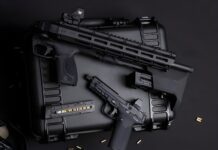
World War II spurred immense innovation in weaponry, showcasing a fascinating blend of brilliant designs and absolute absurdity. From bent-barrel assault rifles to harnessing the power of the sun and unleashing it twice, there was something for every military mind. Somewhere between the rifles and atomic bombs sat the MK 115 cannon, a weapon never fielded but captivating nonetheless.
This weapon was on its way to the battlefield, but the war ended just as it reached its final stages of development. Allied forces seized the only existing prototype, and it’s likely been cut up and discarded since. This is a sad fate because, as Indiana Jones might say, “It belongs in a museum!”
How the MK 115 Worked
Why would anyone care about a prototype aircraft cannon? In most cases, I certainly wouldn’t, but after delving deep into the world of caseless ammunition, I stumbled upon the MK 115. This autocannon featured one of the most unique designs I’d ever encountered for any type of firearm.
Cannons like this were commonly used to target bombers. Simple machine guns became insufficient as bombers grew larger, stronger, and faster. The Germans were firm believers in using cannons for this role, adopting a “bigger is better” mentality. They weren’t entirely wrong, as Allied bombers were becoming increasingly robust.

The MK 115 aimed to be one of the most advanced cannons of its era. It fired a massive 55mm round, a caliber the Germans also used in other cannons. The cannon itself was a gas-operated, belt-fed design that incorporated a breechblock with a swinging lock mechanism. None of these features was particularly revolutionary on its own.
What truly set it apart was its use of caseless 55mm ammunition and its recoilless design.
The round utilized a partially combustible cartridge, with only the base of the cartridge ejecting upon firing. The system employed a locked breech but used a funnel system to vent excess gas rearward and out of the gun. This made it recoilless, or at the very least, semi-recoilless.
Why Caseless?
This was late in the war, and the Nazis were not faring well. They had lost momentum, and supplies were beginning to dwindle. This scarcity led to experimentation with caseless ammunition as a way to reduce metal consumption. The Nazis focused on reducing or eliminating cases for large rounds like the 55mm cannon cartridge, as this would yield the most significant metal savings.
The 55mm round used a combustible material to hold the projectile, with only the base of the cartridge ejecting. I’d imagine this also helped reduce weight, which is crucial for fuel consumption on an aircraft. However, this is pure speculation, as I haven’t found any information discussing the cartridge’s weight or exact composition.

How well the MK 115 would have worked is debatable. Caseless ammunition is notoriously difficult to preserve, often susceptible to deformation and moisture. The gun never finished production, so it’s entirely possible the caseless ammo concept would have proven unworkable in practice.
Why Recoilless?
Aircraft cannons of that period fired large and hefty projectiles. Most were in the 20mm to 30mm range, with 37mm considered sizable. They adhered to these somewhat smaller calibers to mitigate recoil. The fighter aircraft of the era were significantly affected by recoil.
Cannon recoil would jolt the plane, causing it to shift and drift, leading to accuracy issues and making repeatable shots difficult. Airframes also had to be beefed up to handle the recoil. When moving into the 55mm territory, the recoil would only become more intense and create greater problems.

Creating a recoilless design, or at least a semi-recoilless one, would address this issue. Venting some of the excess gas and pressure out the rear of the gun makes a great deal of sense. This would result in a more accurate, easier-to-control gun with less stress on the airframe.
What Could Have Been
The MK 115 was a cool idea, a good idea even, but that doesn’t necessarily mean it would have worked. To be clear, I’m glad it didn’t, and that the Nazis weren’t able to down more Allied bombers. The MK 115 wasn’t replicated elsewhere, and that might have been for a reason. After all, the U.S. even attempted to replicate the bent-barrel STG 44 with a Grease Gun. If they were willing to try that and not the MK 115, then perhaps it truly was a hopeless endeavor.



